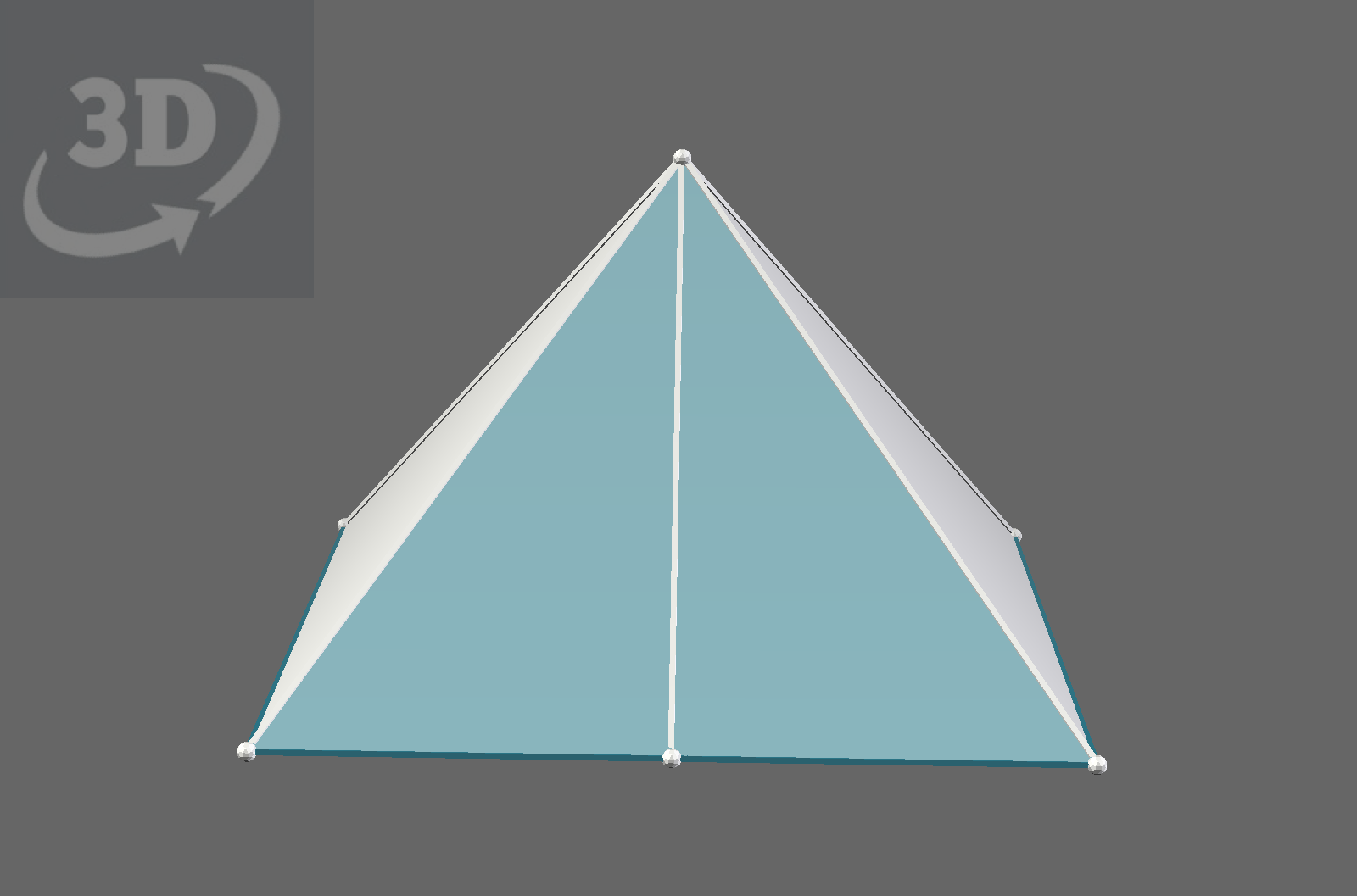This is a study of the geometry of pyramids. Specifically, pyramids that resemble the Great Pyramid of Giza. While the original intended proportions can only be surmised, there is a consensus that it can be described as a right pyramid with base width 2 units and altitude √𝜑 units. Using this proportion, it follows that a line from the center of a base edge to the apex is 𝜑 units, and the slope is Arc Cos 1/𝜑, 51.827…°.
A 3D design created in vZome. Use your mouse or touch to interact°

Below is a straight-edge-compass construction for a face of a pyramid. A 1,2,√5 triangle is constructed, and it’s hypoteneuse (green) is rotated to add to the short side to define Arc Tan 2/(√5+1) = 31.717…° as half angle of the apex, 63.43…°, the same angle as in a golden rhombus.

Pyramids of this proportion can be found in this model, a stellated Rhombic Icosahedron. One face panel is left open for viewing.

Note that this is not a canonical rhombic icosa, which has all golden rhombus faces. It is a polar zonohedron in in √𝜑 field, with 10 square faces and 10 51.827…° rhombi. Each square face is the base of a pyramid. This stellation is related to models described Here